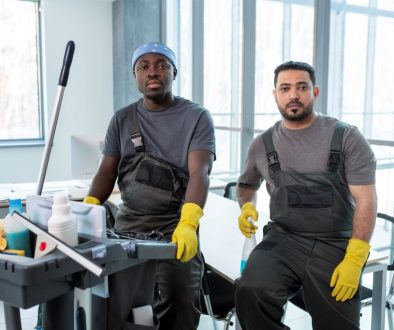The Essential Steps of External Building Cleaning After Construction Projects
When construction or renovation work is done the building exterior can be quite messy as it has dust, dirt, or pieces of construction. The last thing that adds the ultimate value and satisfaction to a building is external cleaning. It must be understood that this process not only improves the looks or the exterior but also makes the construction material to last longer.
It is now high time that we consider it necessary to discuss the basic measures towards the external building cleaning alongside the advantages of the process particularly to newly constructed or the newly renovated facilities.
On This Page
Steps for Exterior Building Cleaning Post-Construction Projects
1. Initial Inspection and Assessment
Any cleaning process should therefore start with an evaluation and inspection of the building to be cleaned. This step helps to:
2. Choice of Proper Cleaning Techniques and Products
After conducting the first evaluation, one has to choose the correct cleaning procedures and solvents depending on the materials and situations found. Some common methods include:
3. Pre-Cleaning Preparation
Before the actual cleaning begins, several preparatory steps should be taken to ensure a smooth process: Before the actual cleaning begins, several preparatory steps should be taken to ensure a smooth process:
4. This section deals with how the cleaning process will be carried out
Once all is set, cleaning can proceed. It’s vital to:
5. Post-Cleaning Inspection
Once the cleaning is complete, a thorough inspection should be conducted to ensure: Once the cleaning is complete, a thorough inspection should be conducted to ensure:
6. Additional End Notes and Suggested Maintenance Regimen
After the cleaning is completed and inspected, some final touches might be necessary to perfect the building’s appearance: After the cleaning is completed and inspected, some final touches might be necessary to perfect the building’s appearance:
Advantages of Washing the Exterior Part of a Building after Construction
Cleaning buildings after construction, especially on the outer part is not just about beautification. It offers several critical benefits, including It offers several critical benefits, including:
Selecting a Professional after Construction Cleaning Service
Even if some of the property managers may think they are in a position to handle the cleaning by themselves it is wise to hire a construction cleaning services. This is mainly expected out of the professional cleaners since they are expected to have the necessary experience, equipment and know-how when it comes to cleaner work and the diversities that may be entailed in the same. Here’s why you should consider a professional service: Here’s why you should consider a professional service:
Conclusion
External building cleaning and post-construction cleaning in general will always be an important aspect especially after construction works have been completed. It also assures that the building does not only look good but also can last longer for a considerable amount of time.
This way, property owners and managers can follow the guidelines shown and be aware of the advantages that will help to protect new or repaired buildings’ appearance and durability for years.
The following goals can therefore be met by selecting the right cleaning service that guarantees the much-needed comfort and a professional clean.




